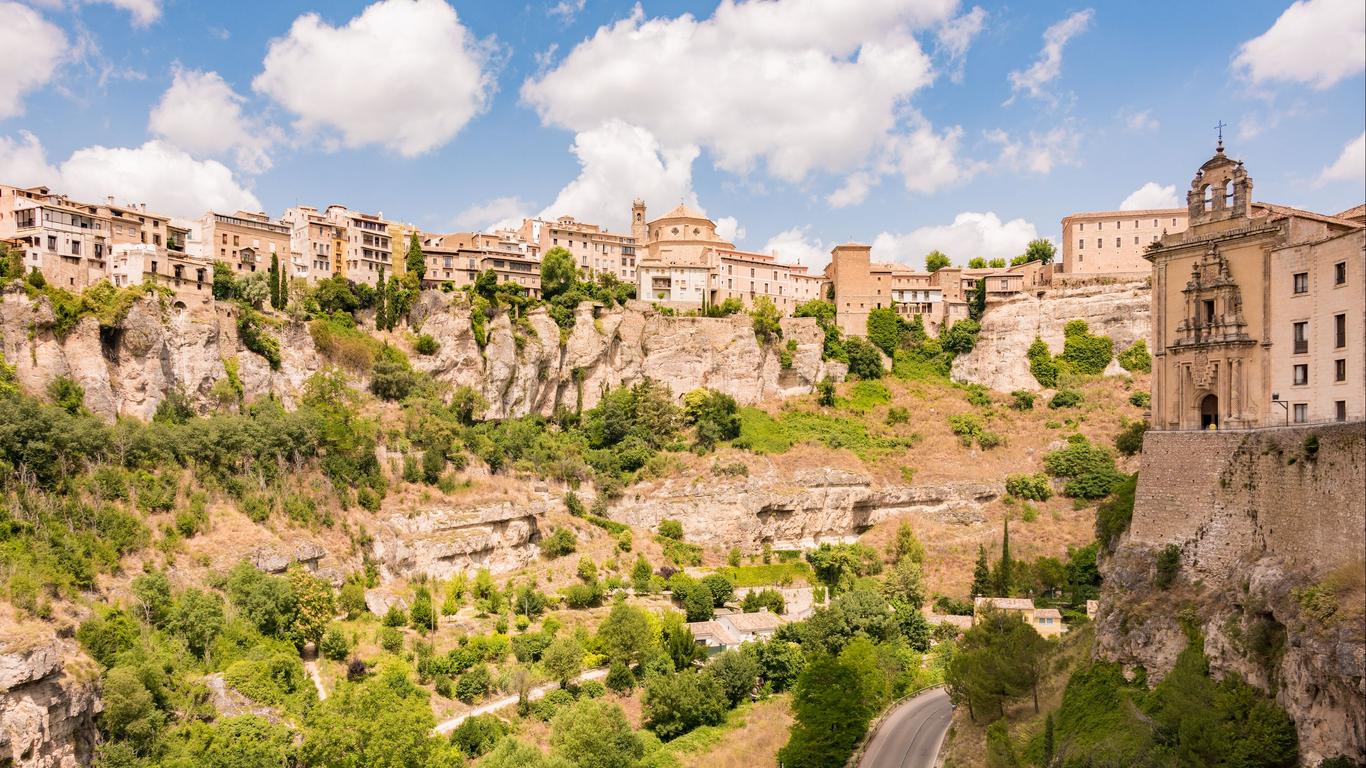Famed for its beautifully preserved “hanging houses” and old-world charm, Cuenca is perched atop a limestone ridge overlooking the Huecar Gorge. It was founded in the 8th century by the Moors, who understood the value of its strategic location at the heart of the Caliphate of Cordoba.
Things to do in Cuenca
Clinging precariously to the cliffs of the Huecar Gorge are the Casas Colgadas, a series of UNESCO World Heritage-listed “hanging houses” that have become icons of Cuenca. Follow Calle Obispo Valero to admire these impressive medieval buildings, many of which were restored in the early 20th century. Some of the best views of the Casas Colgadas are from the San Pablo Bridge, which connects the San Pablo Convent to the Old Town.
Occupying one of the Casas Colgadas is the Museum of Spanish Abstract Art, which houses one of Spain’s largest collections of modern paintings and sculptures across its three floors. Most of its collection dates from the 1950s and 1960s, with the museum officially opening in 1966. In addition to works by Antonio Saura, Gustavo Torner and Fernando Zobel, the artists Eduardo Chillida and Gerardo Rueda are also represented at the museum.
Overlooking Cuenca’s main square is the Catedral de Santa María la Mayor, which combines Romanesque, Gothic and Norman architectural styles in its design. In addition to its richly adorned facade, it features an 18th-century high altar created by Ventura Rodriguez and unique iconography depicting armadillos, turtles and pufferfish.
Getting around Cuenca
Cuenca is just under two hours’ drive from Madrid and around 1.5 hours from Madrid-Barajas Adolfo Suárez Airport. Trains connect from destinations across Spain to the Cuenca railway station and buses travel throughout the city. The centre of Cuenca can easily be explored on foot.





